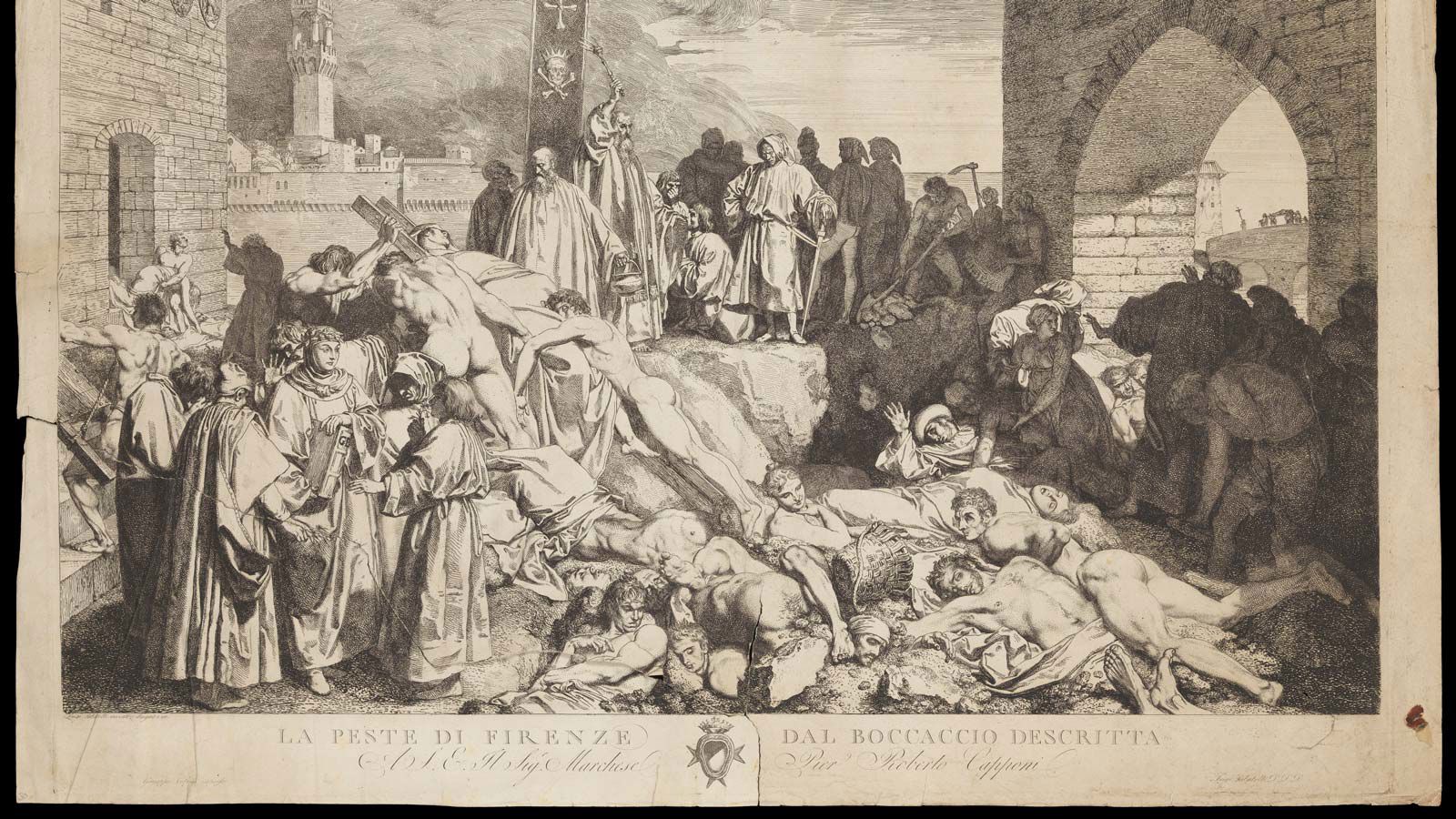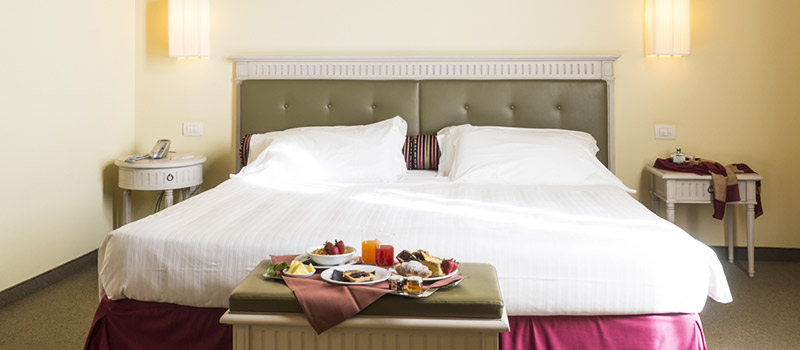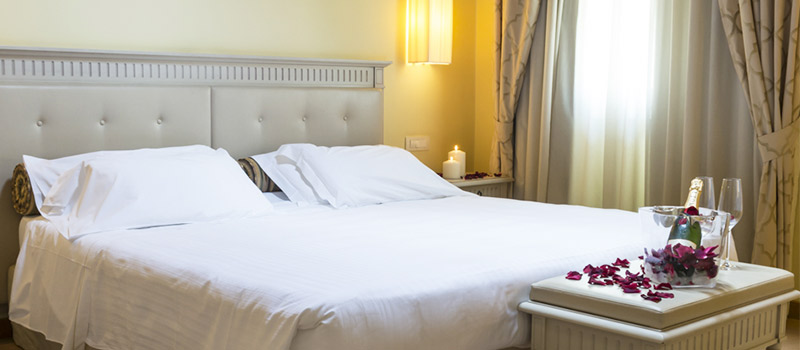The hotel is a few steps from Certaldo's center. The town's main square has the name of Giovanni Boccaccio: the writer and poet of the fourteenth century was one of modern Italian language's fathers and was born here.
The village of Certaldo Alto, a true jewel of middle ages architecture, conserves still today all its originary beauty, in a location of a time gone, in the stream of smooth hills and enchanted villages like San Gimignano, Gambassi Terme, Montaione, Barberino val d'Elsa.
Certaldo Alto is easily accessible from Piazza Boccaccio, on foot or by a short funicular, which gives more emotion to it! In the once House of the city governor, the Praetorian Palace, you can now visit exhibitions about art and nearby archaeological sites. The home of Giovanni Boccaccio is now a museum that preserves, as well as a large fresco of Benvenuti, objects of the fourteenth century, found during the restoration, and a Library dedicated to the life and works of the writer, with works dating back to the sixteenth century.
Every year, several initiatives periodically animate the village: every mid-July Mercantia takes place, a major international festival of street art and theater, which turns the old town in a real midsummer dream!
In October, you can delight your palate with Boccaccesca: a review of food and wine with local products and every year new fantastic proposals!
To know something more: certainly of etruscan-roman origins, the town has developed mainly thanks to its position along the Francigena Way, and it was contended by Florence and Siena, in particular during the twelfth and thirteenth centuries. Interesteng is the historic relation to the nearby Semifonte, populated sind 1181: when Semifonte became a thorn in the side of the powerful Florence Republic, it was completely destroyed in 1202, and most of its inhabitants fleed to Certaldo, where they contributed to the town development, leading to the construction of new homes on the Certaldo Alto hill, until the latter was completely constructed. In the place of Semifonte today a small beautiful chapel remains, built in 1597, which reproduces in 1:8 scale the dome of Florence Cathedral, and is placed in the current San Donnino, a few km from Certaldo, in the florentine Chiantiside.
Where we are
Certaldo is a town of roughly 16 thousands inhabitants, placed in the Valdelsa, province of Florence and heart of Tuscany. We are amongst the most famous Tuscan cities: Florence, Siena and Pisa, and only a 10-minutes drive to the renowned San Gimignano. The Chianti area is also a few minutes drive away.
How to reach us
It is quite easy to reach us: coming from the North through the A1 Highway, exit at Firenze Impruneta and then – coming both from the North and from the South – we advise you to take the Firenze-Siena Freeway (no-pay toll, also known as ‘Autopalio’ or Highway Junction n°3), exit Poggibonsi Nord and keep going in the direction of Certaldo.
Where to stay
In Certaldo, Hotel Certaldo is the ideal place, full of history and tradition! Hotel Certaldo is a new and elegant 4-star facility, born from the restoration of the Old Mill of the family Landi-Papini, overlooking the river Elsa in the lower part of the town. We are a few steps away from Piazza Boccaccio and Certaldo Alto, the beautiful medieval town. The railway station is also a 5-minutes walk from us.
Where to park in Certaldo
You can find several parking lots in Certaldo: in the town centre it is possible to park in Piazza Boccaccio or behind the railway station, in Piazza Giulio Masini.
Other parking lots are along Viale Mario Fabiani and in Via Leonardo da Vinci.
Our guests can park free of charge in the hotel parking and from here reach on foot the town centre or the medieval town in a few minutes.
To reach the medieval town of Certaldo Alto it is also possible to go through the convenient Funicular, which from Piazza Boccaccio takes you up to the medieval town.
It is also possible to reach Certaldo Alto by car, driving along Via della Canonica, then Via del Bosco and ultimately Strada Vicinale del Torrione.
It is possible to park in the parking lot in Via dietro le Mura, only a few steps away from the medieval town itself.
Where to Eat in Certaldo
In Certaldo you can find several good typical restaurants, Tuscan trattorias and pizzerias. Here are some restaurants which are located close to Piazza Boccaccio, in the lower and more modern part of the town:
Restaurant- Wine Bar La Saletta, Via Roma 3 Trattoria la Casalinga, Via Roma 32
Restaurant-Pizzeria Il Pirata, Via Roma 3
Restaurant-Pizzeria Borgo Basso, Borgo Garibaldi 20
Restaurant – Pizzeria ‘Il Delfino’ (The Dolphin, also knows as ‘Tarek’), Via Roma 73
Restaurant-Pizzeria ‘Sale e Pepe’, Via XXVI Luglio 13
It is also possible to find many good Tuscan restaurants in the beautiful medieval town:
Taverna l’Antica Fonte, Via Valdracca 25
Restaurant – Pizzeria Da Messer Boccaccio, Via Boccaccio 35
Wine Bar Boccaccio, Via Boccaccio 37
Restaurant ‘A Casa Tua’, Via Boccaccio 24
Osteria ‘La Bottega di Chichibio’, Via Boccaccio 4
Osteria del Vicario, Via del Rivellino 3
The guests of Hotel Certaldo can ask any reservation for any restaurant at the Reception, free of charge.
It is possible to reach the medieval hamlet of Certaldo with private transport passing through Via della Canonica, Via del Bosco and finally Strada Vicinale del Torrione. Parking lots are available in Via Dietro le Mura, only a few minutes walking distance from Certaldo Alto. Our guests can reach the medieval town on foot or with the convenient funicular, which goes every 15 minutes from Piazza Boccaccio up towards the medieval town (timetables and info at Tiemme Spa).
Sightseeing in Certaldo
The most unforgettable visit you may pay in Certaldo is the one to the medieval hamlet, still intact since the 13th century.
Inside the town you can visit the house of poet and writer Giovanni Boccaccio, who was born and raised here. It is located in the main street, Via Boccaccio, which was indeed dedicated to the scholar and which contains an important library and original documentations from the 16th to the 18th century.
The impressive Palazzo Pretorio (The Magistrate’s Palace), the main palace you will find in from of you, was originally built as a castle for the family of the Counts Guidi and still holds today frescoes and halls of artistic values, almost entirely intact. Descending down the main street, we encounter the Church of the Saints Jacopo and Philip, with its beautiful colonnade and the Museum of Sacred Art.
Palazzo Stiozzi – Ridolfi, with its towers and inner courtyard, was the place where the medieval market took place.
Palazzo Machiavelli, whose tower represented the wealth of the family, is also mentioned in the last will of Giovanni Boccaccio, where it is stated to belong to Guido Johannes de Machiavellis and dating back to the 13th century.
Certaldo’s History
The first settlement of Certaldo dates back to the Etruscan-Roman period, as the various archaeological evidence, found in the area and now kept in the museum of Palazzo Pretorio in Certaldo Alto can prove.
The first official records of Certaldo are from the year 1164, when, according to historical documentation, the emperor Frederick Ist bestowed the town of upon the family of Counts Albertis. Despite this, the first years of life of the town are believed to have begun in the Early Middle Ages, as the characteristics of the buildings would suggest. Further evidence found on the hill next to Certaldo Alto, ‘Poggio del Boccaccio’ (Boccaccio’s Hill) indicates an early agricultural settlement born most surely for the strategic position of the place. Certaldo was indeed on the Via Francigena, pivotal road which linked northern Europe with Rome and used by soldiers and pilgrims alike. It is believed that this favorable geographical position has contributed in time to the economical and demographic development of Certaldo, so as to make it one of the most important centers of the Valdelsa area. Progressively, the town grew in dimension coming to include the lower valley and taking the more modern shape that we now see, with the medieval town on the hilltop and the contemporary Certaldo underneath it.
Certaldo’s Highlights
Certaldo owns its fame to the medieval poet and writer Giovanni Boccaccio, who is considered to be one of the founding fathers of Italian language, along with Dante and Petrarca. The most famous work of Boccaccio is undoubtedly The Decameron, a collection of 200 short stories considered one of the most important works of the 14th century.
Furthermore, Certaldo is also known to be one of the most well-preserved medieval towns in Tuscany and received the award of Bandiera Arancione (Orange Flag) for excellence in tourism, hospitality and the environment.
In recent years, Certaldo has grown in popularity thanks to Mercantia, the street art festival of international importance which takes place here in July.
Typical products of Certaldo
One of the typical products of the town is the Red Onion of Certaldo, grown only in the local countryside.
The relevance of this product has a long history, as the Onion is present in Certaldo’s coat of arms most likely from the 13th century and is also mentioned by in the book ‘The Decameron’ by Giovanni Boccaccio, who lived in the town in the 14th century. We quote:
Certaldo is a castle in Val d’ Elsa placed in our lands…where for a long time one of the friars of Saint Anthony, Friar Cipolla used to go once a year. Not so much out of devotion that was possible to see in him, as for the lands produces onions which are famous in all of Tuscany’.
There are 2 main kinds of this product: the ‘statina’ variety, of round shape, purple colour and sweet taste which ripens in summer, and the ‘vernina’ variety, which has a more flattened shape and stronger taste given by the ripening in autumn and winter.
The Onion of Certaldo was recently awarded with the Slow Food prize, thus contributing to the town’s economy. This product inspired several recipes, amongst which the most famous is probably the Onion Jam, which pairs perfectly with cheeses and boiled meats. Equally remarkable are also the Onion Soup and the Boiled Beef with Certaldo’s Onion.
The presence of the onion in Certaldo’s coat of arms dates back to long before Friar Cipolla, symbolizing a simple people of old country traditions. Grown in abundance in the nearby areas, this product possesses all the requirements in order to become a highlight for the town economy. The Slow Food Association, together with the support of the association “Certaldo 2000”, is engaged in recovering the uncultivated areas in order to promote the increase both in production and in sale of this product.




